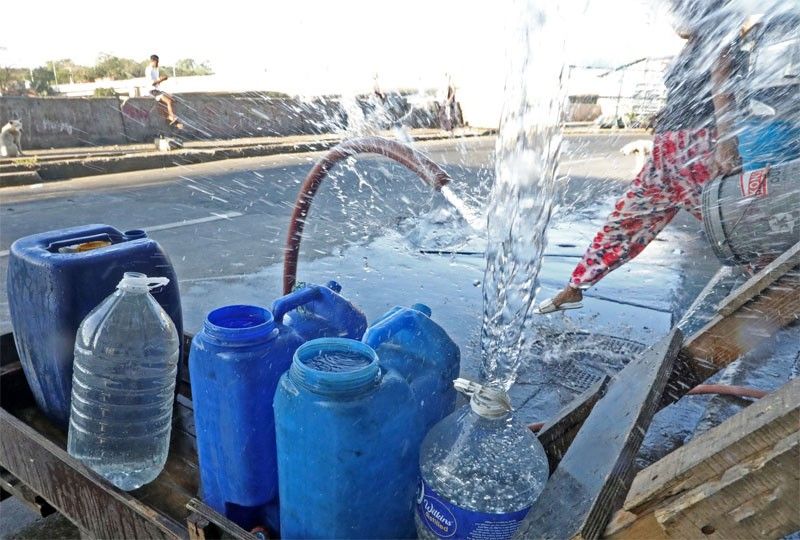MWSS chief: No El Niño water shortage

MANILA, Philippines — The Metropolitan Waterworks and Sewerage System does not foresee a water shortage despite the Philippine Atmospheric, Geophysical and Astronomical Services Administration (PAGASA) raising the El Niño alert amid the threat of the dry spell, MWSS administrator Leonor Cleofas said yesterday.
In an interview with The STAR, Cleofas noted that Metro Manila customers, particularly those being serviced by Maynilad Water Services Inc., would not experience another rotating water interruption.
“If ever, the worst case scenario is there will be a decrease in water pressure,” she said.
The MWSS official added that while the National Water Resources Board (NWRB) only approved the 52-cubic-meter-per-second (cms) allocation until May, the MWSS regularly conducts assessments on the water level of Angat Dam.
“We regularly meet every two weeks to assess the current situation, so ahead of time, we will be able to really assess the current situation at Angat Dam,” Cleofas said.
Maynilad customers in Manila, Quezon City, Makati, Caloocan, Pasay, Parañaque, Las Piñas, Muntinlupa, Valenzuela, Navotas and Malabon; the cities of Cavite, Bacoor and Imus in Cavite and the towns of Kawit, Noveleta and Rosario also in Cavite experienced at least eight to 14 hours of daily water cut off in the latter part of March and first two weeks of April.
“As of now, we don’t see a possible water shortage, but we still need to be concerned about water conservation as based on the projection of PAGASA, the impact of El Niño will be in the latter part of this year and next year. We will have an opportunity to refill our dams,” Cleofas said.
As of 6 a.m. yesterday, the water level of Angat Dam further dropped to 194.68 meters or 20 centimeters less than its previous level of 194.88 meters.
Angat Dam supplies more than 90 percent of Metro Manila’s potable water needs and provides irrigation for 25,000 hectares of farmlands in Bulacan and Pampanga.
Based on the projection of the state weather bureau, the rainfall in May up to September will be near normal, according to Cleofas.
“Despite the expected El Niño, it will still rain. In fact, according to PAGASA, the cyclones will be more intense, that is why we are hoping that we can recharge our dams,” she said.
The MWSS executive reiterated the need to conserve water, emphasizing that help from the Department of the Interior and Local Government (DILG) and local government units (LGUs) is necessary to help mitigate the possible impact of the dry spell.
PAGASA on Tuesday formally issued an El Niño alert amid the threat of the dry spell in the country.
PAGASA administrator Vicente Malano said recent conditions and model forecasts indicated that there is an 80 percent probability that El Niño will start in June, July or August and may persist until the first quarter of 2024.
El Niño is characterized by unusually warmer-than-average sea surface temperatures at the central and eastern equatorial Pacific.
Malano said all concerned government agencies and the general public are encouraged to keep monitoring and take precautionary measures against the impending impacts of the dry spell.
Irrigation supply suspened
NWRB executive director Sevillo David Jr. yesterday said his agency will suspend the water allocation for irrigation starting next week.
In a text message to The STAR, David clarified that the suspension was not related to the drop in water level of Angat Dam.
“(Farmers) are already harvesting and they have no water requirement starting May 11 until their next cropping, by the middle part of June,” David said.
From 30 cms, raw water allocation from Angat Dam for irrigation is now at 10 cms until May 10, according to the NWRB official.
He said the suspension would remain until the resumption of the next cropping season by the middle of June.
The NWRB reduces and stops irrigation allocation for rice fields since many farms are either in their terminal drainage situation or there is less water requirement.
Last year, the agency stopped the irrigation supply in April.
“This is usually done annually during summer at the end of their cropping season,” David said.
He earlier said the El Niño phenomenon’s threat is real as he urged the public to conserve and practice water recycling. – Danessa Rivera, Emmanuel Tupas, Pia Lee-Brago
- Latest
- Trending






























